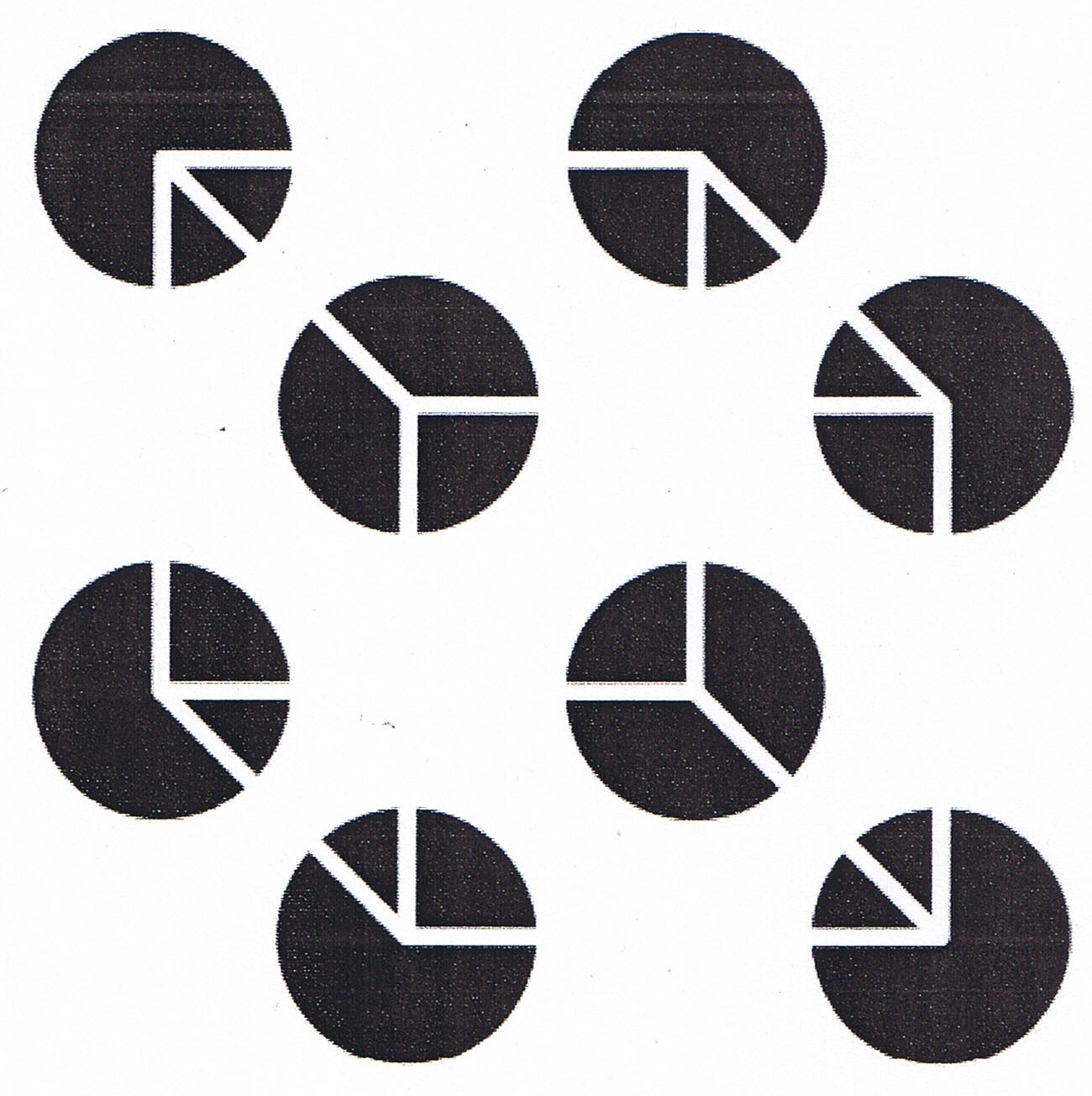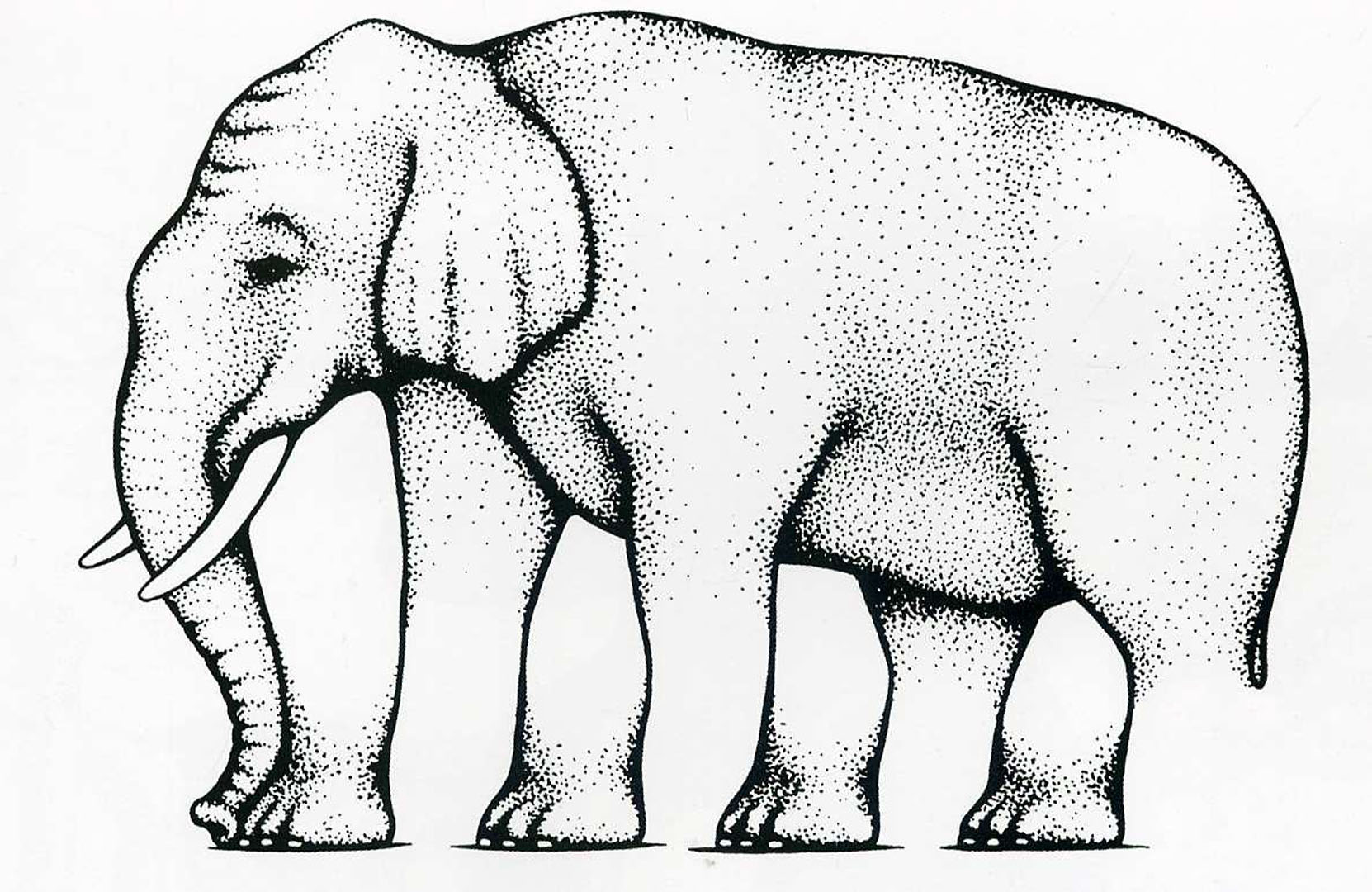Zone 2: Gestalt in Solid Space¶
The focus of Zone 1: Structure of Spatial Experience is on boundaries of experience. Here, our focus is on the content of the solid regions confined within these boundaries. Studies in the present Zone are part of a larger stream of thought which began in Gestalt psychology early in the twentieth century, at about the time when narrative cinema was taking its first steps.
Gestalt and Perceptual Organization¶
Gestalt psychology was the scientific branch of a movement of which phenomenology was another branch.
Phenomenology seeks to describe the world from the first-person, intrinsically subjective point of view. The phenomenological point of view stands in sharp contrast to the external, objective point of view entertained by the natural sciences, including the sciences concerned with neural systems and human behavior. Although the present Zone and Zone 1: Structure of Spatial Experience come from two contrasting scientific traditions, in our hands the two Zones largely overlap and complement one another.
A modern incarnation of Gestalt psychology is the study of perceptual organization: a term of art used to describe both the process of organization and its result.
To illustrate, consider visual perceptual organization. The information that penetrates the visual system within the bounds explored in Zone 1: Structure of Spatial Experience does not always rise to visual awareness. Studies of visual perceptual organization tell us why and when some parts of this information are experienced and others are not. For example, parts of visual displays that are grouped together into stable larger entities (objects and surfaces) rise to awareness, and the parts that are not included in such groups remain outside of awareness.
Studies of perceptual organization focus on a number of principles - or laws - of perception, inherited from Gestalt psychology. Examples are the principles of grouping (proximity, similarity, etc) and the principle of figure-ground organization illustrated just below.
In the figure above, the elephant’s legs alternatingly shift their figure/ground allegiance. In the figure below, the black shapes can be seen as black circles (occluded by a wireframe cube) or as apertures in a white surface (through which we can see the cube). In either case, the cube is constructed by your brain in a process called amodal perception.

Drake Bradley & Heywood Petry. Subjective Necker Cube (1977).
Today, these principles are being translated from the descriptive formulations of Gestalt psychologists to computational, algorithmic formulations, suitable for use in computer vision and artificial intelligence. This is a worthy goal, which we help to promote. Yet our focus in the present Zone lies elsewhere. We remain committed to the subjective point of view and the study of experience.
Cinematic and Immersive Modes¶
Laboratory studies of visual perceptual organization tend to use static images and animated patterns (“visual stimuli”) rendered on flat screens and viewed from fixed distances. We refer to this format of investigating experience as cinematic because it resembles the conditions in which we view movies.
The alternative is the immersive mode in which the “stimulus” surrounds the viewer. This mode is rarely entertained in the laboratory studies of perceptual organization, but it happens to stand at the center of this Zone and SPaCE at large.
To appreciate the import of this transition, recall the figure-ground principle of visual perception celebrated by Gestalt psychologists and their followers. According to this principle, everything that we experience has the structure of a “figure” that appears to stand in front of a “ground,” while the latter appears to complete itself (to “fill in”) behind the figure.
Figure-ground organization has been studied extensively in two-dimensional images, which are nevertheless perceived to have some qualities of solid space because the “figure” appears to stand in front of the “ground.”
Here we investigate how the figure-ground organization of experience behaves in immersive spaces, where “figure” and “ground” already stand in certain depth relations by virtue of scene geometry. We find that, in spite of the geometric determination, immersive spaces afford the designer to rapidly switch the apparent depths of the regions perceptually labelled as “figure” and “ground.”
Such figure-ground substitutions are possible in the special conditions created by subtle and swift alignment and misalignment of image elements and by controlling the viewer’s focus of attention. At the moment, studies in the present Zone are fully invested in a systematic study of such special conditions.
Solid Cut¶
An immediate application of these ideas is creating a solid (volumetric, three-dimensional) equivalent of the cinematic cut.
In the screen-based moving picture, series of still two-dimensional images (“shots”) are separated by “cuts,” which often substitute the entire visual array of the screen frame with another visual array. The rapidly developing visual technologies are thrusting cinema into the new territory of immersive experience. In the immersive space that surrounds the viewer, the traditional cinematic cut is unusable. Substituting the entire visual array (akin to the cinematic cut) disrupts the continuity of experience.
The full-screen substitution disorients the viewer who has just used some features of the previous array to orient herself in the environment and now is forced to re-orient herself in the new array, and then to do so again and again, on every substitution. This is where we use the solid cut implemented by means of figure-ground substitution.
In other words, we replace the shot-and-cut method of traditional cinema by new methods, in which the episodes used to be captured by different shots are segmented by meaningful organization of solid space, in a manner that does not disorient the viewer.

